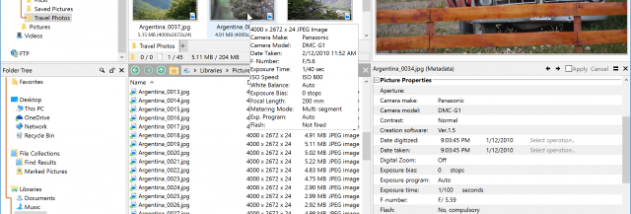

Charles was someone whose personality still shines through the texts and artefacts and memories he left and the stories (some edifying, some bawdy) that were told about him decades, then centuries, after his time. He was a man of many parts, a warlord who conquered an empire, a man of peace and a judge who promised ‘for each their law and justice’, a man who presided over church councils as a prince and defender of the Latin Church, a person who preached and practised both caritas (charity) and amor (love) and knew the value of giving to the less powerful and the less wealthy, a person whose interests ranged from viewing the night-sky and sending men to supervise the repair of Christian sites in the Holy Land to keeping in touch with kings and potentates from Ireland and northern Spain to Constantinople and Baghdad, a man of flesh-and-blood, a family-man who had at least nine sexual partners, fathered at least nineteen children, and was grandfather to at least eleven more. AN EXTRAORDINARY MAN This book’s subject is a man who was by any standards extraordinary: a manysided character whose sixty-five years of life and doings were driven by unremitting physical energy and intellectual curiosity.

Genealogy B: The descendants of Pippin and Alpaida Genealogy A: Arnulfings, Pippinds, Carolingians List of Genealogies Genealogy A: Arnulfings, Pippinds, Carolingians Genealogy B: The descendants of Pippin and Alpaida Genealogy C: The family of Charles Map 15 courtesy of Mike McCormick, Harvard University. Map 12 courtesy of Lukas Werther, University of Jena. Frontiers and campaigns on land and on sea Elements from Map 10 are courtesy of Lacey Wallace, University of Lincoln. Plan showing archaeological finds at Aachen 12.

The empire of Charles at its maximum extent 6. The division of the Frankish realm in 742 5. The (partly putative) travels of Willibrord, c.658–739 4. 12) 16 A small section of the cut-marble inlays (opus sectile) in Charles’s church at Aachen (© LVR-Amt für Denkmalpflege im Rheinland, Silvia Margrit Wolf) Fuller descriptions of and comments on the images can be found on pp. With kind permission of Simon Coupland) 12 The church at Aachen (© LOOK Die Bildagentur der Fotografen GmbH / Alamy Stock Photo) 13 Lateran Mosaic with St Peter, Pope Leo and King Charles (© Manfred Luchterhandt) 14 The noble warrior with his sword (Malles Venosta, San Benedetto © Photo SCALA, Florence) 15 A small section of the Breve commematorium (The Short Report), 808 (The Basel roll © Öffentliche Bibliothek der Universität, NI2, Bl. (Monogram denier, Pavia, Borne hoard 1987 (Overijssel, Netherlands). Brentführer) 8 The papyrus letter of Maginar (© Fritz Groothues, with kind permission of the Archives Nationales) 9 The Tassilo Chalice (© Stift Kremsmünster Kunstsammlungen, The Best Kunstverlag) 10 The Rhine–Mosel confluence at Koblenz, near St-Goar (© Leamus/Getty Images) 11 The new coinage, 793. List of Illustrations 1 Bonze equestrian statuette of Charles (© RMN-Grand Palais, musée du Louvre/Jean-Gilles Berizzi) 2 The tomb of Abbot Willibrord at Echternach (© Alain Dierkens) 3 The River Oise at Quierzy (© Fritz Groothues) 4 (a) The skeletal remains of Himiltrud in the crypt at Nivelles (© William Stafford) (b) chart showing chronological distribution of Charles’s charters (courtesy of Billy Nelson) 5 The Great St Bernard pass (© Buena Vista Images/Getty Images) 6 The pass of Roncesvaux (© Janet Nelson) 7 Saxon sword (© LWL-Archäologie für Westfalen/S. She has written and translated widely on early medieval Europe, her books including Charles the Bald (1992), The Frankish World (1996) and Courts, Elites, and Gendered Power in the Early Middle Ages (2007). Nelson DBE is Professor Emeritus of Medieval History at King’s College, London, where she taught for many years. Notes on the Illustrations Notes Bibliography Acknowledgements IndexĪbout the Author Janet L. Nelson K I N G A N D E M P E R O R A New Life of CharlemagneĬontents List of Illustrations List of Maps List of Genealogies 1 Introduction 2 Family Stories Charles Might Have Known 3 The Child in the Picture 4 Family Fortunes 5 Charles in Italy 6 Peace and War: 774–9 7 The Family Deployed, ‘… all Saxony subjugated’ 8 Boundary-crossings 9 Franks, Bavarians and New Thinking: 787–9 10 The Regensburg Years 11 Saxons, Saracens, Northmen and the Council of Frankfurt: 792–4 12 The Beginning of the End of the Saxon Wars: 792–9 13 Interesting Times, Dangerous Times 14 Fin de siècle – début de siècle: Romanum gubernans imperium 15 The Aachen Years 16 ‘Charles, by the bounty of divine grace emperor and augustus … to his beloved and honourable brother Michael glorious emperor and augustus’ By Way of Conclusion


 0 kommentar(er)
0 kommentar(er)
